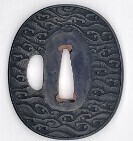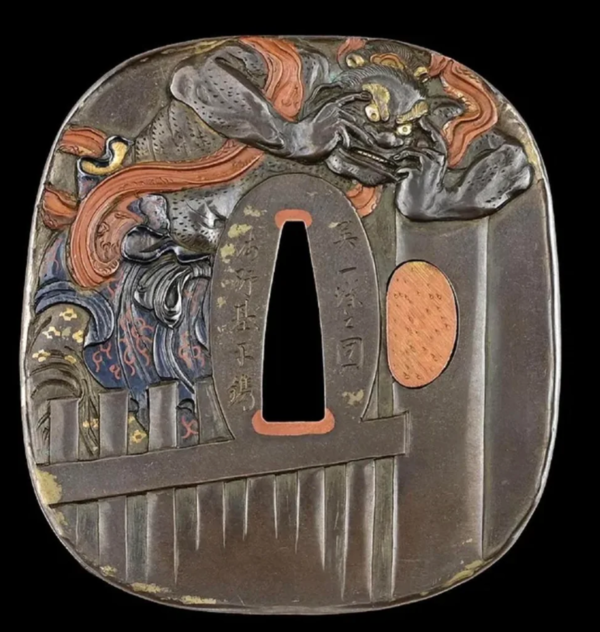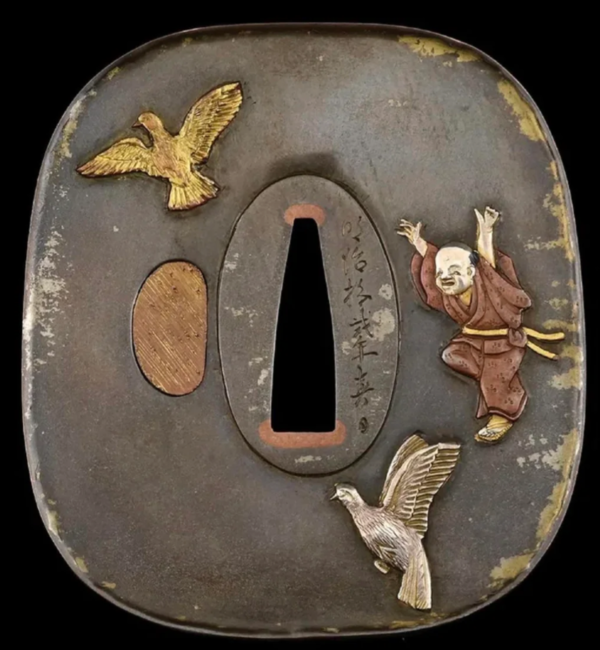-
Posts
216 -
Joined
-
Last visited
Content Type
Profiles
Forums
Events
Store
Downloads
Gallery
Everything posted by Jesta
-
The one shown here seems to be of higher quality than the two other versions. I wonder if it was the original that got copied…
-
Thanks… I have seen so many of these that I thought that they were all modern rubbish…
-
Are the two you posted old, but mass-produced for export?
-
Training my eye, and I found this on Reddit: https://www.reddit.com/r/Katanas/comments/1oor0gw/signed_unno_motomasa/ My initial reaction was one of caution. The flags raised are: 1. The depictions are too colourful. I have not see too many Edo period tsuba with so many colours (outside of the cloisonné designs), so this seemed a little off. 2. The design seems to be back to front. If the kosuka-ana is real, then the simpler design would be on the front, while the complex carving would be on the back. 3. The wear looks odd. At first glance this looks like it should be iron, but the wear reveals a sort of yellowish underlay or white, neither of which look like worn iron patina. 4. The sekigane look like they are decorative rather than functional. 5. I may be biased, but the demon design looks like the sort of thing you see a lot on new tsuba… What are your thoughts on this? Is it legit?
-
- 1 reply
-
- 6
-

-

-

-
Found this in an odd little shop in Himeji. Would anyone be able to help with the mei and any thoughts on the origins? It is iron, with a nice wave pattern, which seems to have silver highlights (which are a bit faded on the omote side, more visible on the ura), and bamboo or reeds in gold. But, that’s all I can say for now.
- 1 reply
-
- 1
-

-
Thanks… now I have that image in my head…
-
Thanks. Another one that looks pretty ancient. I think that the upside down presentation probably comes from thinking that swords are slung and presented edge down, and seen from the point back to the hilt, in Western cultures so they just transfer that here. You can see this even in modern katanas (largely sold from China to the US) where the tsuba is put on the wrong way round so that the design faces the blade rather than the tsuka.
-
I am off for a short trip to Osaka and Kyoto. Are there any particular shops I should drop into to look for tsuba or other pieces of koshirae?
-
Thank you. Yes, no tapering edges, but the shape of the openwork on the right is identical. For time being I will refer to the shape as either a fan or a tray… The tray design would fit with the porcelain plate posted by Dale. That could be a version of the tray…
-
Reminds me of some of the tachi tsuba that also have three pieces with overlays holding the decoration inside a tsuba with a raised mimi like this.
-
That's a very interesting comparison. It definitely looks very similar, particularly because of the rounded, rather than pointed, side.
-
Thanks, as always… The way the hitsu are presented makes it hard to know if they were meant to be the same thing or something very different. I was just getting used to seeing how the three in this post could be inome, and then you throw “bag” into the mix . Now I am just confused… I suppose that the ones on mine could also be beans… What do you think about giving it a “koshoami” or “shoami” school origin?
-
Thank you both. Does the Saotome design you show have inome? Is that design a very stylised version? I can see that the one Jean shows is similar, but I can’t find many with the very large inome with rounded (rather than pointed) shapes. I would also guess that mine doesn’t have hitsu-ana since the inome don’t extend to the seppadai like the one in the Met.
-
I recently picked this one up on Jauce, with very little information. I liked it for being unusual, but that also means there aren’t that many out there to compare it to… Thanks to a previous post by SpartanCrest I have found this at the Met: https://www.metmuseum.org/art/collection/search/34912 but there is no info on the tsuba. This site: https://tsubashi.com/product/nobuie-boars-eye/ has something very similar, and notes that it might be “Nobuie School”. Does anyone have an opinion on whether it would be Nobuie School or from some other origin? Iron, with dimensions of 7.8cm x 7.8cm. Edit: I also found this one: https://japanesesword.com/archived-pages/2017/9/22/shoami-tsuba That refers to the design just as shoami.
-
-
My guess is that if it has a function then it’s to do with balance. A heavy tsuba would bring the center of balance back towards the hands. There are some techniques involving locking tsuba against each other in sword combat, but I’d say it is debatable as to how much they were ever really used. Probably not enough to warrant any redesign of tsuba or we would see this kind of thing more often.
-
I haven’t bought this one. It’s on Jauce. I have put in a low bid, so if it comes through then ok, if not then…
-
I was browsing Jauce when I came across this one: https://www.jauce.com/auction/p1196107295 Looking closely I am a bit suspicious of the “gold” highlights, particularly on the clouds and the figures. To my eye it looks more like someone has gone over them in gold pen (or gold paint) than if it was gold leaf… Anyone else see it, or did I dream it?
-
That’s much more definite than mine, it’s very clear that there is water involved. Could it be the torii gates that are in the sea?
-
Wow… I think that if I want something like this I will go with the S$16 from aliexpress… I can always sell it on Jauce 🤔🤣
-
Just goes to show that value is determined entirely by what someone will pay for something. There’s no objective value to these items, and that value will fluctuate as people get more, or less, willing to pay. In the current case it appears, for now at least, that the value of the piece is in the Y70,000 range since no-one is bidding beyond that. It will be interesting to see where this one goes.
-
This forum has been a great place to learn, and all the little details were what worried me in the first place. Then people seemed to be so willing to pay serious money for it, so I wanted to check my intuition. I came back on this morning to see what it sold for and saw the Y200,000 price tag… Genuinely shocked.
-
Thanks, as always… The one in the MFA seems to be the one that the modern Chinese copies come from (given the obi position), while the one for sale on Jauce looks more like the one on the tansu. I wonder when the different looks seeped into the fake market.














